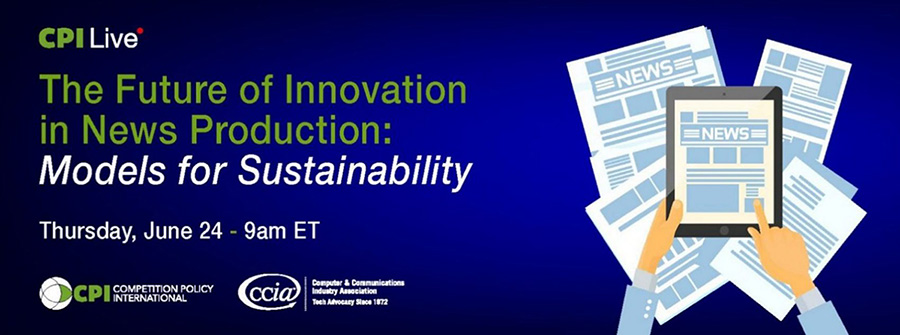Below, we have provided the full transcript of our panel discussion The Future of Innovation in News Production: Models for Sustainability. Read below to see the timely discussion where a panel of experts discussed the pressing issues for the industry and possible paths forward for both platforms and publishers.

Robert PEGORARO:
Good morning, everyone. And welcome to The Future of Innovation in News Production: Models for Sustainability, a panel brought to you by CPI and CCIA. That is Competition Policy Institute and Computer and Communications Industry Association. My name is Rob Pegoraro, I’m a freelance journalist based just outside of Washington DC. With me is Rick Edmonds of the Poynter Institute. Andrew Charlton from Accenture who works with Hansen for the Tow Center for Digital journalism, and Chris Krewson of Lion publishers.
Often, in a panel about the state of journalism, you’re supposed to start with all the bad things that have happened because there’s been a lot of crummy developments in my profession over the last five years of the more than 25 years I’ve spent in it. But instead, I wanted to tick off a few positive developments, and then we can talk about what we should be doing to make more of these positive developments happen. Some of them involve people on this very chat.
So I’d start with, in Colorado 24 local papers will stay owned by their communities because of an investment by the Colorado News Conservancy. Loca
...THIS ARTICLE IS NOT AVAILABLE FOR IP ADDRESS 216.73.216.23
Please verify email or join us
to access premium content!

